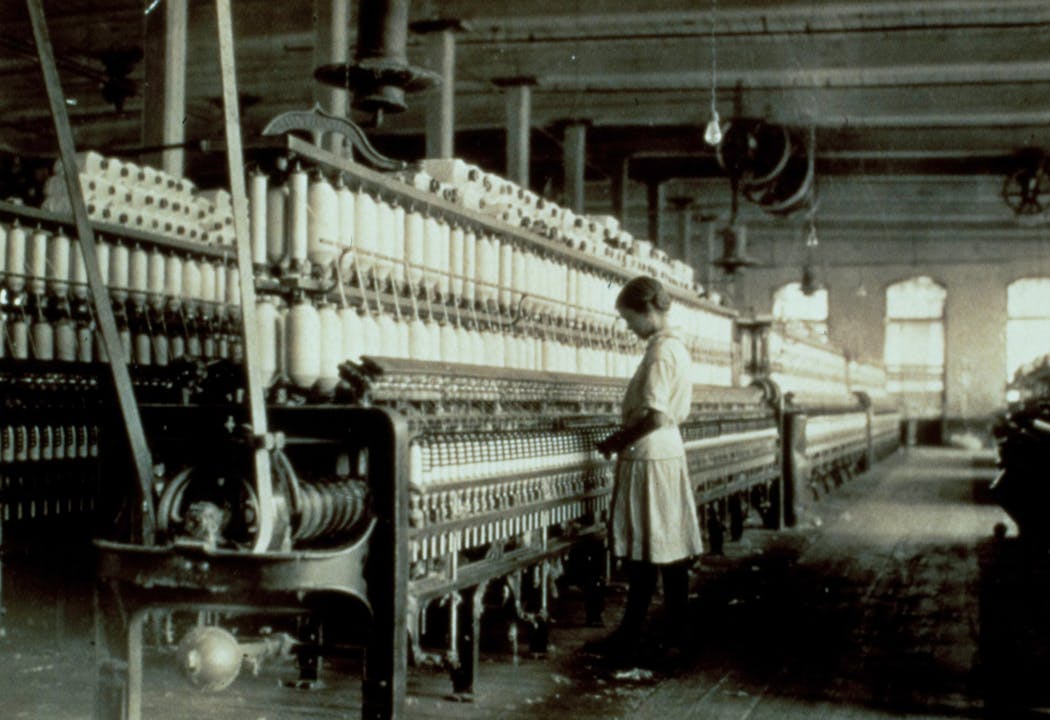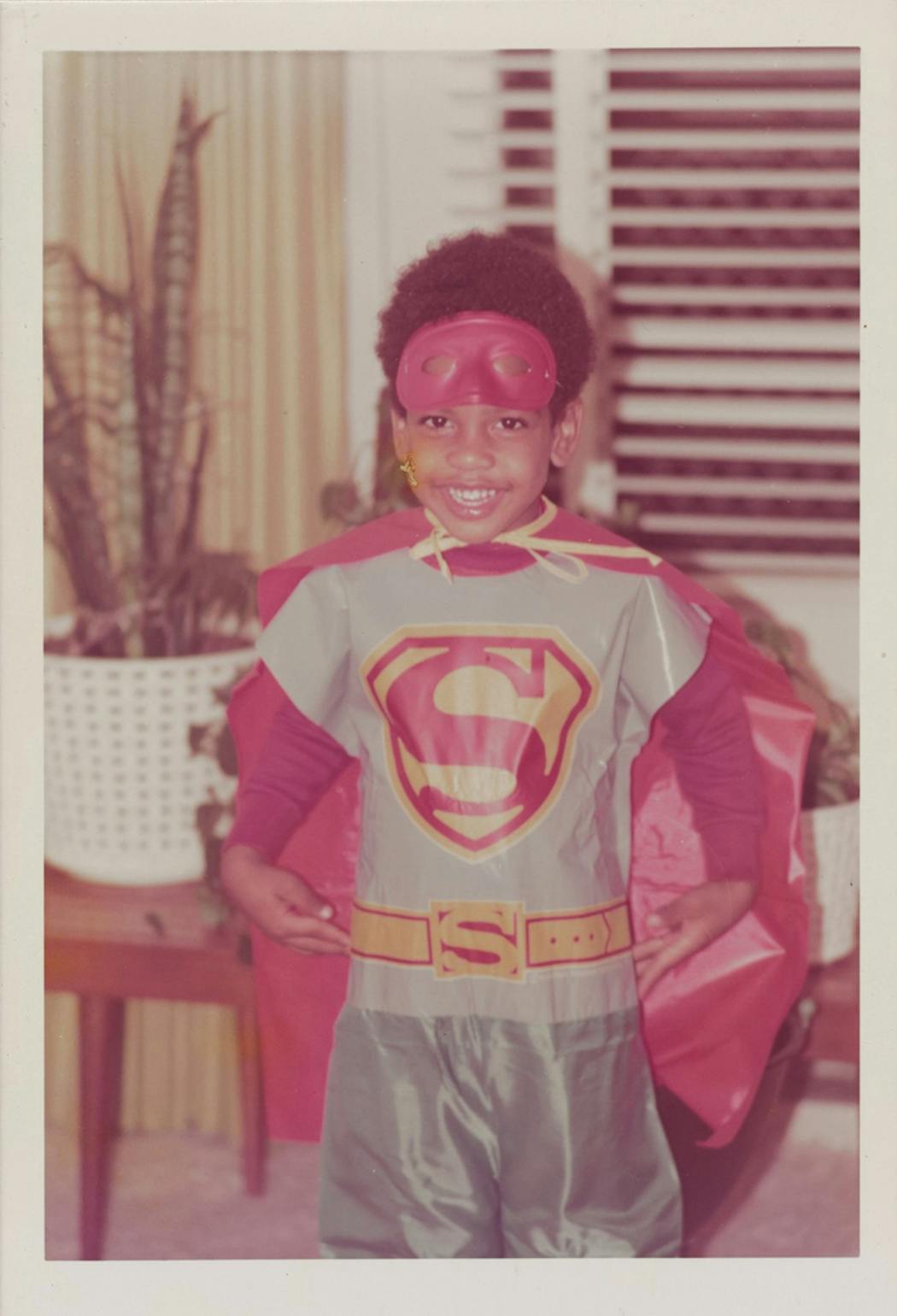Fourteen-year-old budding artist Aliyya Marie Mahmoud stood in the Minneapolis Institute of Art's Harrison Photography Gallery, gazing at a deep-red hijab in Rania Matar's portrait "Samira 20, Bourj El Barajneh Refugee Camp, Beirut, Lebanon."
"I was like, 'Hey, I can relate to that color. Why not dig in more to what this picture is?' " said Mahmoud, who was dressed in a sharp gold-striped black blazer, her hair dyed with flashes of pink, and shaved on either side.
She proceeded to analyze the background, noticing the scratched-up wall behind Samira, and the contemplative look on her face. Mahmoud was drawn to the "more realistic" environment — stuff "that's not all happy happy sunshine and rainbows."
A freshman at Roosevelt High School in Minneapolis, Mahmoud is one of 11 student guest curators who worked with Mia photo curator Casey Riley and the museum's teen Art Team to write 75 wall label texts for "Just Kids," a new show of more than 100 youth-focused photographs from the past century by Lewis Hine, Walker Evans, Danny Lyon, Larry Clark, Dawoud Bey and many more, including Minnesota's own Alec Soth and his daughter Carmen.
The unique exhibit came from Riley's adult mind. It became a way to get to know the museum's collection. (She took over as head of Mia's Department of Photography and New Media in August 2018.) As she thumbed through the immense collection, she noticed she was having an emotional reaction to the images. Certainly they were nostalgic, but that wasn't all.
Riley said she realized that "I have no idea what my 11-year-old son would think of these — if he would have the same emotional response. And that's where the spark for this show really grew from, because I wanted to know whether these photos would strike a chord with younger people."
Building empathy through photography
Riley worked closely with Mia's Center for Empathy in the Visual Arts (CEVA) to put out a call to high school kids in the Twin Cities.
Mahmoud and her best friend, Phoenix Kennedy, filled out applications and reported to Mia's photography collection room on three Saturdays last October to discuss and write about photographs, and learn from guest speakers including Alec and Carmen Soth. (The show includes their 2010 collaboration "The Brighton Picture Hunt," a series of commissioned photos that Carmen, then 7, ended up shooting in England after customs officials told her dad that his visa did not allow him to do so.)
The participating kids got to select what they wanted to write about. Some pictures proved more popular than others.
Three kids wrote about the 1944 photo "Deaf Mute Children, Zurich, Switzerland" by Werner Bischof, which shows several boys raising their hands, eyes closed, as if in a trance.
"Why are their hands raised?" says the wall label written by Kennedy. "My confusion drew me closer to the image, and then as I read the title I could relate to these kids in a different way, knowing what they had to go through."
Not every photo had a bunch of responses. Only Kayne Davis wrote about "Jitterbugging in Juke Joint, Clarksdale, Mississippi," a 1939 picture by Marion Post Wolcott showing a group of African-American youths dancing:
"There's no white people in the photo — I know this was taken at a time when the White Man had all the power, so this is probably a place where they could go and be themselves," says Davis' wall label. "I wonder if the photographer was white? Would they act like this in front of the White Man?"
The photos aren't the only thing that's kid-friendly. There's also a "hangout" area in the gallery, per the request of the student curators, with a couple of couches and a table of kids books from Soth's Little Brown Mushroom collection. All the photos in the show are hung at a height of 56 to 58 inches, slightly lower than the museum's standard 60 inches.
The kids also shaped the digital aspect of the show. They requested that nothing be hashtagged or made easily consumable for social media. Riley thought they would want to use laptops for writing during these Saturday sessions, but the kids were surprised by the attempt to bring any technology into the creative process. They were really into print-only.
"Digital stuff can be deleted and if you don't have the traditional copy of that, all that history can be lost," said Mahmoud.
Mahmoud and Riley agreed that kids communicate through visual images. And kids deal with a lot of tough stuff. Death, homelessness, being a refugee, racism, disability and child labor all crop up in the exhibit.
"I think we don't think enough about kids' powerlessness and how much they want to be seen," said Riley. "And how much they want us to make space for them."
John Adams' Nativity oratorio 'El Nino' gets colorful staging at the Met
Taylor Swift's 'The Tortured Poets Department' is here. Is it poetry? This is what experts say
Finding an apartment may be easier for California pet owners under new legislation
4/20 grew from humble roots to marijuana's high holiday




